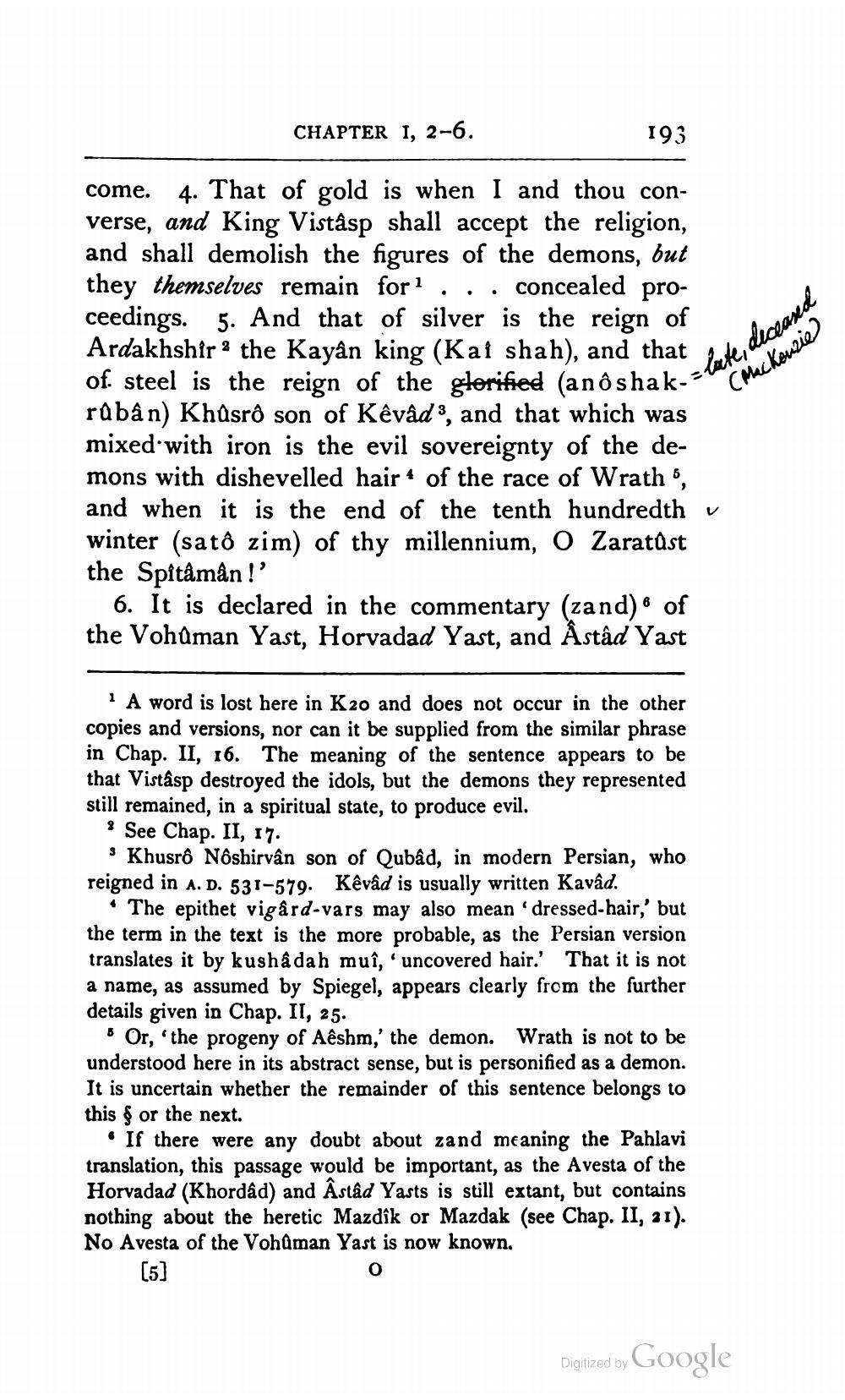________________
CHAPTER 1, 2-6.
193
come. 4. That of gold is when I and thou converse, and King Vistâsp shall accept the religion, and shall demolish the figures of the demons, but they themselves remain for 1 ... concealed proceedings. 5. And that of silver is the reign of Ardakhshirthe Kayân king (Kai shah), and that putera of steel is the reign of the glorified (anÔ shakrâbân) Khusro son of Kêvâd, and that which was mixed with iron is the evil sovereignty of the demons with dishevelled hair 4 of the race of Wrath, and when it is the end of the tenth hundredth winter (satô zim) of thy millennium, o Zaratūst the Spitâmån!'
6. It is declared in the commentary (zand) of the Vohaman Yast, Horvadad Yast, and Astâd Yast
ko atate, deceased
Mackenzie
? A word is lost here in K20 and does not occur in the other copies and versions, nor can it be supplied from the similar phrase in Chap. II, 16. The meaning of the sentence appears to be that Vistâsp destroyed the idols, but the demons they represented still remained, in a spiritual state, to produce evil.
See Chap. II, 17. * Khusrô Nôshirvân son of Qubad, in modern Persian, who reigned in A. D. 531-579. Kêvad is usually written Kavâd.
• The epithet vigârd-vars may also mean 'dressed-hair, but the term in the text is the more probable, as the Persian version translates it by kushådah muî, ' uncovered hair.' That it is not a name, as assumed by Spiegel, appears clearly from the further details given in Chap. II, 25.
• Or, 'the progeny of Aêshm,' the demon. Wrath is not to be understood here in its abstract sense, but is personified as a demon. It is uncertain whether the remainder of this sentence belongs to this for the next.
• If there were any doubt about zand meaning the Pahlavi translation, this passage would be important, as the Avesta of the Horvadad (Khordad) and Âstâd Yasts is still extant, but contains nothing about the heretic Mazdîk or Mazdak (see Chap. II, 21). No Avesta of the Vohûman Yast is now known.
[5]
Digitized by
Digitized by Google




